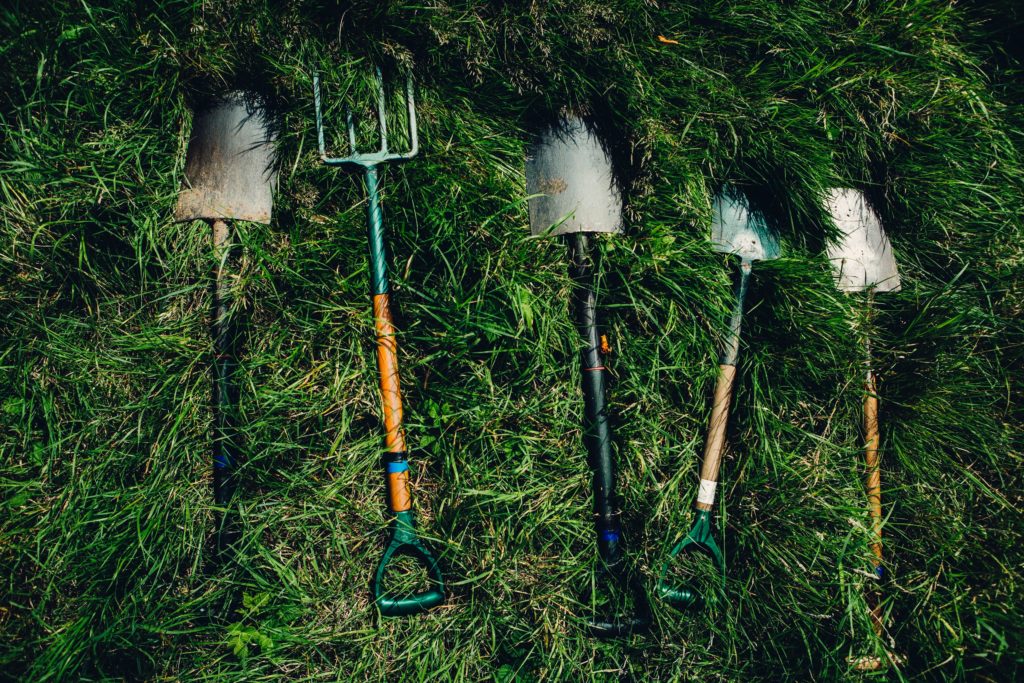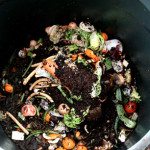Looking for a new project now that you’re spending more time at home? Setting up a compost pile or bin is an eco-friendly hobby that lets you turn kitchen scraps into a healthy soil feeder for your yard or garden.
Whether you live in a house with a backyard or an apartment, you can fully customize your compost pile to fit your space’s needs. This project is perfect for anyone looking to live a more sustainable life as it reduces the amount of solid waste your household produces.

So why compost?
The average American tosses 4.4 pounds of trash every day, and it’s estimated that nearly 25% of solid waste from U.S. households comes from the kitchen. 454 million tons of yearly waste then ends up in landfills, which produce harmful greenhouse gases, such as methane.
Scared yet? While the stats around waste are alarming, compost is one way to reduce the impacts of landfills on the earth. In fact, composting actually reverses the effects of global warming.
Put your best green foot forward with an at-home compost project. Read on to learn more about what you can (and can’t) compost, as well as how to set up a compost pile at home.
Compost This, Not That
While reusing scraps as compost is a great way to reduce waste, not all of your kitchen trash can be reused in this way. Since compost is a decomposition process, materials rich in carbon (browns) and nitrogen (greens) are needed to complete the breakdown process, but other common kitchen materials need to be avoided.
Use this free kitchen printable detailing what you can and can’t compost so you never toss the wrong material into your pile or just keep reading to learn more!
Browns and Greens
There are two main categories of compost: browns and greens. Once you start layering your compost, you’ll want your compost material ratio to be three-parts brown to every one-part green (3:1).
Brown compost materials that will add essential carbon to your compost:
- Branches and twigs
- Shredded newspaper
- Dead leaves
- Egg shells
Green compost materials that will add essential nitrogen to your compost:
- Fruits and veggies
- Loose tea and tea bags
- Coffee grounds and filters
- Old flowers

Materials to Avoid
If you compost the wrong thing, you could poison your pile or delay decomposition (which can produce a rotten egg smell).
Avoid these materials when collecting your compost materials:
- Citrus fruit peels
- Meat and dairy
- Cooking oils
- Diseased plants and weeds
- Coal or charcoal ash
Setting Up an Outdoor Compost Pile
The most popular way to compost is by setting up a bin outdoors. If you don’t have a yard or area where you can set up an outdoor compost pile, there are indoor composting methods, such as vermicomposting and fermentation, available to you.
To set up a compost pile outdoors, follow these six simple steps:
1. Find a spot in your yard for your compost pile.
First and foremost, you need a place for your pile. Look for somewhere in your yard that gets natural shade and is (ideally) close to a water source. Decide whether you will build a pallet structure around it, purchase a bin, or bury your compost directly into the earth.
2. Gather compost materials.
Once you’ve established a place for your compost, it’s time to collect your materials. You can do this over a series of days or weeks. Remember that you’ll want a 3:1 ratio of browns to greens. You can keep an extra trash bin in your kitchen specifically for compost or even freeze your leftover scraps.
3. Add your compost layers.
Now that you’ve got your compost materials squared away, it’s time to begin the decomposition process! Start by adding a layer of brown materials and then a layer of green. Continue layering until you’ve run out of materials. Remember that your brown layers should be thicker than your green layers.
4. Use moisture in your compost.
Another essential ingredient for your compost is water. Add moisture using a nearby water source every 3-7 days, but apply it as a mist rather than a thick stream of water to keep your pile from getting soggy. A soggy compost pile can slow down decomposition and produce a rotten odor.
5. Aerate your compost.
Speed up decomposition by aerating your compost every 3-7 days. You can do this by turning your compost using a shovel or other garden tool. After a few weeks of aerating, you should notice changes in your compost pile. The organic materials, like eggshells, should be starting to break down, and your pile should begin to feel warm and steamy.
6. Use your compost as a soil feeder.
After about 2-4 months, your compost is ready for use! It should look like crumbly topsoil, and nearly all of the organic materials should be broken down. Rather than a strong odor, the topsoil should smell pleasant and earthy. If you find your pile still has odors or lots of organic materials in the topsoil, the decomposition process has not yet been completed.When your compost is ready for use, sprinkle it as topsoil on your yard or add it to potted plants and flowers to help them grow. For more ways to use your compost, check out this visual from The Zebra below.

By Karlyn Mckell


